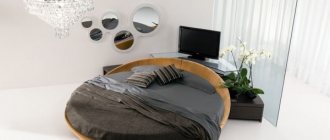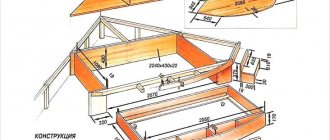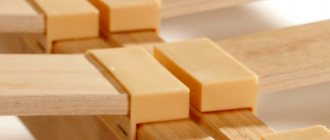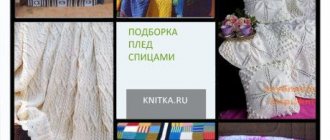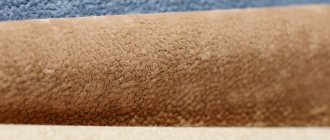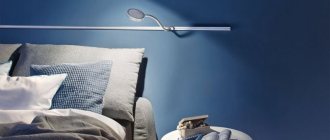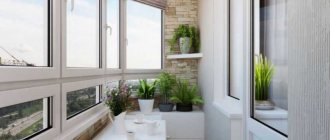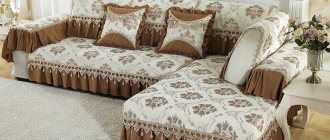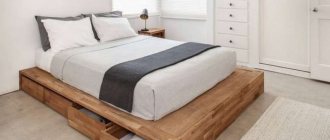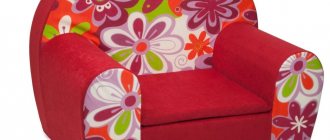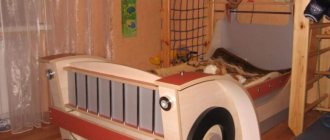In order for your bedroom to look neat, the bedding on the bed should be covered during the day. In this case, less dust settles on it, and the room takes on a more well-groomed appearance. To sew a bedspread with your own hands, first decide on the design of the product, perform preliminary calculations and read the step-by-step instructions.
Of all the ways to cover a bed, a bedspread probably offers the most versatile use of fabric. Light and heavy materials are equally suitable here. Bed covers can be soft and flowy, lined for added warmth and durability, or quilted for both warmth and an interesting surface texture.
The following describes two options for how to sew a bedspread with your own hands (simple and with frills). These products are designed to fit a full-size bed and are long enough to even cover the pillows.
Do you need a blanket?
Indeed, very often someone simply forgets about this detail, and someone does not consider it necessary to purchase it. However, the role, or rather, two roles of the bedspread in a cozy bedroom cannot be overestimated:
- Protective when the cape protects the bed linen from the unpleasant consequences of contact with the outside world. And we are talking not only about dust, but also about sunlight, which will quickly make even the brightest fabrics fade.
- Decorative, when an elegant bedspread emphasizes the chosen design or brings some note of dissonance to it, diverting attention, for example, from the unsuccessful design features of the room. This piece of sleeping textile will perfectly cover the bed linen, so you can buy it in any color and material used.
In addition, this is a reliable way to give your bedroom a well-groomed look, especially in the mornings when there is no time to carefully make the bed.
How to calculate fabric consumption for a quilt
It all starts with an idea!
Very often they write to me, they want to sew a patchwork quilt, but they just can’t get around to it, I don’t know where to start! Let's get into our bins! There are heaps and heaps of scraps and I really want to use them all so that they don’t take up space in the closet, and we realize that something is missing. We go to the store, and there... Beautiful, and such a design, and such a pleasing color, and such flowers... we buy them, go home, and happily realize that we bought too much, spent a lot of money, but the result is still the same...
It all ended at the idea level! And so that this doesn’t happen... let’s start!
Types of bedspreads
The simplest bed cover is represented by an ordinary rectangle, which can be sewn by housewives with minimal sewing skills.
Creations with:
- ruffles;
- flounces;
- puffs;
- corners.
An excellent bedspread can be made by sewing two pieces of fabric together, creating a double-sided product. If the fabric is different, then you can quickly change the interior of the bedroom without making much effort and without spending a lot of money.
Bedspreads decorated with embroidery, satin ribbons, and appliqué will look unusual and very attractive.
A quilted bedspread will take you back to distant childhood, when the world seemed big and safe, and problems seemed easily solved.
A patchwork bedspread will be a good decoration for any country style and will bring many joyful moments to the owners of the bedroom. This patchwork technique is again becoming popular among craftswomen who want to create an unusual and bright thing.
As a workout
It's difficult to get a perfect result the first time.
Those who don’t want to take risks can, before sewing a silk quilted bedspread, first practice on a patchwork quilt , for example, for a crib.
patchwork technique allows you to sew a hand on even long seams according to an almost finished pattern, or rather, prepared on the basis of an idea.
Patchwork technique
When making patchwork, any worn items available in the house are used , and scraps from old jeans will add strength to the bedspread if they are “fitted” into the overall scheme.
- Assembling a canvas from scraps of fabric prepared in the form of identical (pattern) squares, rhombuses, rectangles or triangles is easier than obtaining identical shapes on fabric sliding in your hands by stitching on a typewriter.
If the work went smoothly the first time, and the result inspired new products, then the craftswoman has succeeded!
Source
Density and size
Depending on the preferences of the housewife, these decorative items can be:
- light and flowing;
- with a thick lining that securely holds the shape.
The choice of bedspread depends on the personal tastes of the hostess and the style of the bedroom. A short bedspread will look great in minimalist styles.
The long one is more suitable for a classic design and will elegantly cover the bottom of the bed. It will also create a romantic atmosphere and fill the bedroom with comfort.
The walkway will cover only part of the bed, leaving the bed linen on display.
What are the manufacturing techniques?
It is not difficult to make your own bedspread with your own hands. In addition, it is much more profitable than ordering it from a studio. Such products are made using various techniques:
- Patchwork.
- Stitch.
- Knitting.
- Crochet.
Patchwork
Each of these options allows you to make an interesting, beautiful product that will look great and will be a pleasure to cover.
Patchwork
A do-it-yourself bedspread made from scraps is a colorful, beautiful and artistic piece of textile. You won't be able to sew it quickly, but it's worth it.
To make a bedspread, you need to proceed in stages:
- Determine the size of the product;
- Choose a suitable color scheme depending on the surrounding interior;
- Lay out fabric blanks: pieces, squares, strips, shreds;
- Prepare the fabric - the future back of the bedspread;
- Lay out the necessary tools: scissors, thread, needles, sewing machine, pins, pencil (chalk), ruler with squares or square template.
Product with frills
Patterns can be of any shape. If a beginner is going to sew, it is better to start with the simplest geometric shape. Otherwise, taking on a task that is beyond your strength, you can make an ugly thing or simply ruin a lot of fabric. You also need to decide what pattern will be on the product (and whether there will be one at all).
The material must be prepared before use. To do this, soak the fabric in hot water for about ten minutes and then rinse in warm water. It’s even better to additionally starch and iron future workpieces.
Quilted bedspread with frill
The quilted bedspread is ideal for any room. It is best to choose cotton, bamboo, cotton as the main fabric. If the environmental friendliness of the material is not the most important thing, you can use synthetic, mixed fabrics (for example, curtain fabric, satin, etc.).
Counterpane
Quilted bedspreads are best made from fabrics used for curtains. They are denser, wider, more wear-resistant. If you use materials whose width ranges from 220 to 24 centimeters, you can make the product without additional seams or joints.
The lining fabric in such textiles should also be dense so that it does not wear out quickly. In addition, you need padding polyester as a filler. When choosing a thick material, the folds from a hastily thrown blanket will not be visible, the stitching will be visible more clearly, and the product will be warmer.
You might be interested in this Instructions for taking measurements of a woman’s figure to create patterns
The main thing is to choose the right needle and stitch width. Thin fabrics need delicate fixtures. Cotton and similar materials can be sewn with a thick needle and the widest possible stitches.
Knitting needles
You can knit a blanket with your own hands using knitting needles. To do this you need to prepare the necessary materials. The product can be made from the following types of yarn:
- wool;
- flax;
- cotton fabric;
- synthetics;
- silk.
Knitted product
A blanket can be knitted from any type of yarn. The main thing is not to add metallized threads. The material is selected depending on the purpose of the product, its quantity depends on the selected pattern and knitting option. If the bedspread will be decorated, additional finishing material will be needed.
Important! When knitting, it is not recommended to use yarn that has been lying around for a long time. A frayed canvas will look sloppy.
Tools for work:
- knitting needles (metal, bone, plastic, wood). Quality products are well polished, with not very sharp or blunt ends. Knitting needles need to be selected twice as thick as the yarn;
- knitting pins to secure stitches;
- device for counting rows;
- a thimble to facilitate knitting jacquard-type ornaments;
- bobbins that make it easier to work with multi-colored yarn;
- rings for marking, fixing the beginning of a row or place for placing a pattern;
- tips of different colors so that the loops do not fly off;
- scissors with sharp ends for carrying out additional necessary work.
To draw up drawings and make patterns, you may need additional tools (notebook, iron, drawing devices). It is better to knit a blanket by elements (squares, stripes), and then connect them together.
The sequence of sewing a blanket with knitting needles is as follows:
- Studying the drawing.
- Knitting a small sample pattern by casting on and fastening stitches according to the pattern.
- Cast on the required number of stitches, not counting the first and last.
- Knitting loops.
- Connecting strips by knitting or stitching.
- Finishing the edges after finishing work.
Pink set
To give the product a beautiful look, after completing the work, you need to trim the edges of the product. Decoration options may vary:
- edging with braid, matching color or contrasting. For these purposes, you can take braid;
- decoration with small pompoms of different colors. To do this, you can knit an additional row (or sew them);
- sewing on ribbons with tassels;
Some housewives decorate bedspreads with different scraps of fabric. You can watch various master classes and interesting ideas for decorating bed linen.
You might be interested in: Features of paint for denim products
Crochet
To crochet a blanket, you will need the following tools:
- threads for crocheting things or special yarn from knitwear;
- beads, ribbons (if necessary);
- threads for sewing (dresses);
- hook of the required size;
- a needle with a large eye for joining squares and sewing on decorative elements.
The final question is how to crochet a bedspread, these are the stages of work:
Blanket for children's room
- Choose a knitting pattern. You can make the same type of squares or shapes of different types.
- Knit the required number of elements.
- Connecting squares to each other.
- Tying the blanket around the perimeter. You can make an openwork braid or tie the edges with single crochets. Additionally, you can decorate the product with beads, appliqués, crocheted flowers or ribbons, threading them through the spaces between the posts.
Textile
When choosing fabric, you should be guided by three rules:
- it should be comfortable to work with her;
- it should be pleasant to use;
- the color should match the decoration of the bedroom.
The materials usually used are:
- silk;
- tapestry;
- wool;
- fur.
Silk will give the room lightness, tapestry - stability and reliability, wool - coziness and warmth, fur - volume and comfort, quilted fabric will give a well-groomed, homely environment.
The quality of the fabric will directly affect the durability and beauty of the created bedspread.
But it is better for a beginning needlewoman to first try her hand at simple cotton or blended fabrics. They are easy to process and require no experience.
Lightweight sliding fabrics require certain skills; they always try to slide off the cutting table, do not like the marking process, and their edges are difficult to process.
A fabric that is too thick may not be able to be processed by a regular sewing machine.
Deciding on the model, fabric, color
Sewing a bedspread is not difficult if you have basic cutting and sewing skills. After all, any simple-cut bedspread is a simple rectangle of fabric.
A baby blanket should be soft and pleasant in texture.
An ordinary piece of material of the required size must be processed in such a way as to obtain the desired result. The bedspread can be light, flowing, without lining, or thoroughly dense, with stitching. In addition, a banal rectangle can be decorated: add frills, ruffles, decorative stitching, embroidery, applique and get a unique bedspread.
The bedspread should be chosen based on personal preferences, the overall style of the room, and the purpose of this textile element.
Everyone chooses the style and design of the bedspread for themselves.
An excellent solution would be a double-sided bedspread. If the sides are made of a single fabric, then it is extremely easy to use. There will be no need to worry about which side to place it on the bed. When the turns are with different patterns, you will have the opportunity to change the look of the bedroom according to your mood, covering the bed in different ways.
Choose a fabric that will only give you a comfortable feeling during use.
A bedspread decorated with various decors (ribbons, lace, puffs, flounces) will give the room incredible comfort and create a romantic atmosphere. At the same time, the abundance of textile components in the lower part performs a practical function - it hides the bed frame.
A silk bedspread is stylish, fashionable and sophisticated!
A bedspread made of smooth satin, silk fabric or a tapestry version will add sophistication to the room. The use of shiny fabric and gilded trim will add chic and pomp.
A thick-pile bedspread made of wool or fur will do an excellent job of providing additional insulation and will add softness and comfort to the room.
A quilted bedspread will protect you from the cold, create a homely, well-groomed environment, and an atmosphere of warmth and comfort.
Complex bedspread patterns will require more effort and skill from the seamstress.
ADVICE. For a craftswoman with minimal experience, it is better to choose no-frills bedspread models, fabrics that do not require special care in the work. An excellent option would be cotton, medium-weight blended fabrics.
The better the quality of the fabric, the more pleasant it will be to use the bedspread later.
Color spectrum
When choosing the color of the fabric of the future product, you must be guided by the existing decoration of the bedroom and take into account its illumination and size.
Most often, the color of the bedspread emphasizes the color of the main finish, complementing it. But sometimes the bedspread is used as a contrast or accent spot.
In a small room you should not make a cape that is too bright, and multi-colored tints and mirror shine are more suitable for large bedrooms.
A dark room will benefit from pleasant light shades, and a cold room will be enlivened by warm tones. Pastel colors can slightly expand the boundaries of the room.
The boring interior of the house will be enlivened by bedspreads with ornaments or drawings.
Preparatory stage
To sew a high-quality bedspread, it is better to use a sewing machine, but you can make the stitches yourself. The sewing technology will not be too different, but in the second case it will take a lot of time, and besides, it is very difficult to make the stitches even by hand.
Related article: How can you close the space under the bathroom?
Bedspread size chart.
First of all, you need to assemble the pie. Place the facing fabric on the floor, wrong side up. Then put a spacer on it, and then a lining. Carefully align all layers, otherwise creases and folds will spoil the final appearance of the product. After this, be sure to secure the structure. The easiest way to do this is with sewing pins and basting.
Pin the edges and secure the center of the future bedspread. After this, decide how you will quilt the piece. For beginners, it is preferable to choose simple patterns, such as rhombuses or squares. After this, use a needle and thread of a contrasting color to outline the pattern of the future stitch. But if you are using fabric that shows puncture marks, such as satin, you should skip this step. Or use a special adhesive tape that is securely attached and serves as a guide. It is easily removed without leaving any traces, just moisten it with water.
After this, you can proceed directly to stitching.
Preparing for sewing
Sewing a bedspread is not the most difficult task if you take your time and proceed consistently. First, you should make a pattern on a reduced scale. This step will allow you to determine how much fabric you will need to purchase and will allow you to better understand the entire process.
Step-by-step instructions for making the simplest bedspread are quite simple:
- Measure the bed in length and width. If necessary, measure the height to the floor (if you plan to make a flowing bedspread).
- Add a few centimeters on each side to the hem.
- If frills are planned, then the total length of the sides of the bed with frills is multiplied by 1.5. This will help make beautiful folds. The height of the frill will correspond to the height to the floor.
- Buy fabric.
- If necessary (large bed size), sew two fabrics.
- Finish the edges.
- Gather and sew on the frill.
If a frill is not provided, then the edges are simply folded and processed.
We cut and sew
Layer cutting
Pattern for cutting the bedspread
If satin or silk is chosen, the materials are quite slippery, and the cutting process must be approached carefully.
It is most convenient to fold the fabric in half lengthwise so that the length of the upper part from the fold line is equal to half the required length.
You can do the same with width. Then, closer to the cutting line, connect the layers in several places with pins or needles.
In the same way, the padding polyester lining and the bottom layer are cut to size, but there is no need to allow for shrinkage.
Stitching the layers
This is necessary in order to fix the shape.
Marking the drawing
Only a top-class seamstress can afford to quilt a bedspread directly on a machine. The rest will have to be patient and have a template cut out of thick paper based on preliminary calculations.
Drawing stitches
The template (square or diamond) must be life-size.
Starting from one of the corners along the front side of the product, we apply our workpiece and, trying to capture all three layers, “draw” lines with a basting stitch.
Once we have outlined it, we move the square (rhombus) close to the line on one side, and the adjacent side to the edge, and sew again.
And so on until we reach the opposite corner.
- The future blanket should be on a smooth surface while working.
Stitch
- If possible, try to stitch as close to the basting as possible, but without stepping on it, then the auxiliary thread will be easily removed.
Sew on the frill
Frill
The main requirement: all typesetting strips must be cut in the same direction. Longitudinal or transverse - not so important.
Decorating the bedspread with a pleated or finely gathered frill is a matter of taste and habits of the craftswoman.
Some tips
Cutting the material is carried out only on a flat surface.
To create flounces, you can use scraps of fabric; the only rule is that all the pieces must be matched in the same direction (length or width). When creating a patchwork quilt, the pieces of fabric must be in harmony with each other.
A bed runner is usually made of contrasting colors, otherwise it will get lost on the bed. Usually it is laid out across or along the bed, but it is much nicer to place it diagonally. The width and length of the future product are chosen arbitrarily.
You can sew several bedspreads at once and change them depending on the season.
The idea of making a bedspread with your own hands will help make your home unusual and fill it with an item made with soul. And if you practice a little, you can please your closest relatives with such a gift by presenting an elegant bedroom decoration for the next holiday. A small cape is suitable even for a sofa. And photos of bedspreads will help you choose the design of your future creation.
Pillows on the sofa, baby blanket
From the leftover fabric from cutting the bedspread, you can simultaneously sew decorative pillows for a sofa or bed, or a children's blanket. Those who sew a lot probably accumulate a lot of leftover pieces of fabric of different colors. sew a bedspread from a variety of colored pieces . The shape of the flaps can be very diverse; it is not necessary to cut out exact geometric shapes. If you don't have enough leftover fabric, you can make a patchwork quilt.
It is not necessary to quilt a children's blanket; it is much more important to make it cheerful and colorful. The fabric can be “diluted” with another fabric, with a pattern of your favorite cartoon characters or animals, in bright and warm colors. Such a blanket will add warmth and energy to the children's room, bringing a certain mood and positive emotions into the nursery.
No matter how much you like the practicality of dark shades, do not buy black, purple or gray bedding for children and do not use these colors when decorating a child’s bedroom, including bedspreads. Such colors have a depressing effect on the children's nervous system.
Volumetric, soft pillow letters are a stylish and original decoration for your bedroom, especially if the textile letters completely repeat your name. Such original decorative decorations are easy to make with your own hands. In addition, sewing just one three-dimensional initial letter of your name does not require a lot of fabric and other materials. For more details, see the article on the “Sewing Master” website: DIY pillow letters.
Fabrics from which quilted bedspreads are made
Among the most common materials for sewing quilted bedspreads are cotton, linen, satin, jacquard.
However, you can also see items made of silk, velvet and even fur on sale.
- How to choose fabric for a bedspread
- Cotton
. Bedspreads made of 100% cotton are practical and pleasant in appearance. They are pleasant to the touch and breathable. For sewing cotton bedspreads, calico and satin are most often used; - Calico
. Products made from calico are durable, wear-resistant and have a fairly budget price; - Satin
. Satin bedspreads, in addition to strength and durability, are also distinguished by their elegant appearance. Due to the special interweaving of the threads, the surface acquires a light, refined shine, giving the product an expensive look; - Atlas
. Satin bedspreads look quite attractive and are popular. However, their shiny surface may look tasteless in some interiors; - Velvet
. Luxurious velvet bedspreads will decorate a bedroom in the Baroque or Rococo style. Products made from this material are quite difficult to maintain, are prone to dust accumulation and have significant weight; - Flax
(linen). Natural material, hygroscopic, resistant to dirt and wear. Among the disadvantages, we note the high price and specific appearance of the linen product, which will not fit into every room concept; - Silk
. Silk models have a stunning appearance that can make them the main highlight of the interior. However, a silk bedspread is expensive and rare; - Jacquard
. Jacquard bedspreads are very durable, beautiful and reliable. This is one of the few options suitable not only for beds, but also for sofas - the upper material is almost non-slip. The interweaving of threads forms a variety of patterns. The disadvantages include the high price of products, especially designer items; - Velor
. Velor products are durable, wear-resistant and attract attention. However, they are difficult to care for at home. In addition, a velor bedspread is difficult to fit into the bedroom interior;
Microfiber, fur, and combined (mixed) fabrics are also used for sewing.
Photo: Quilted bedspreads for the bedroom
